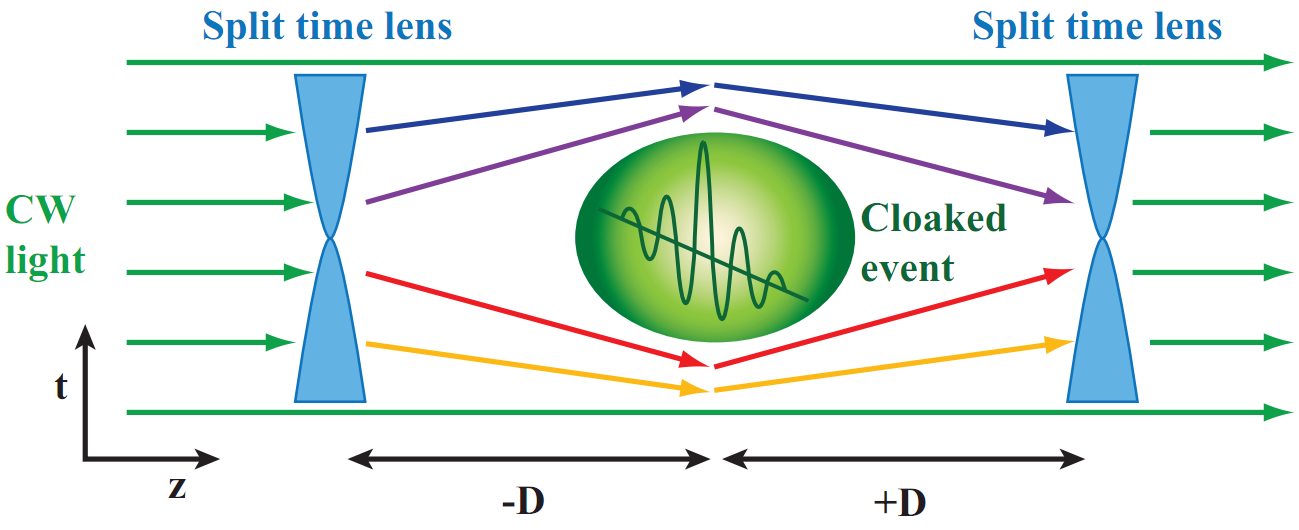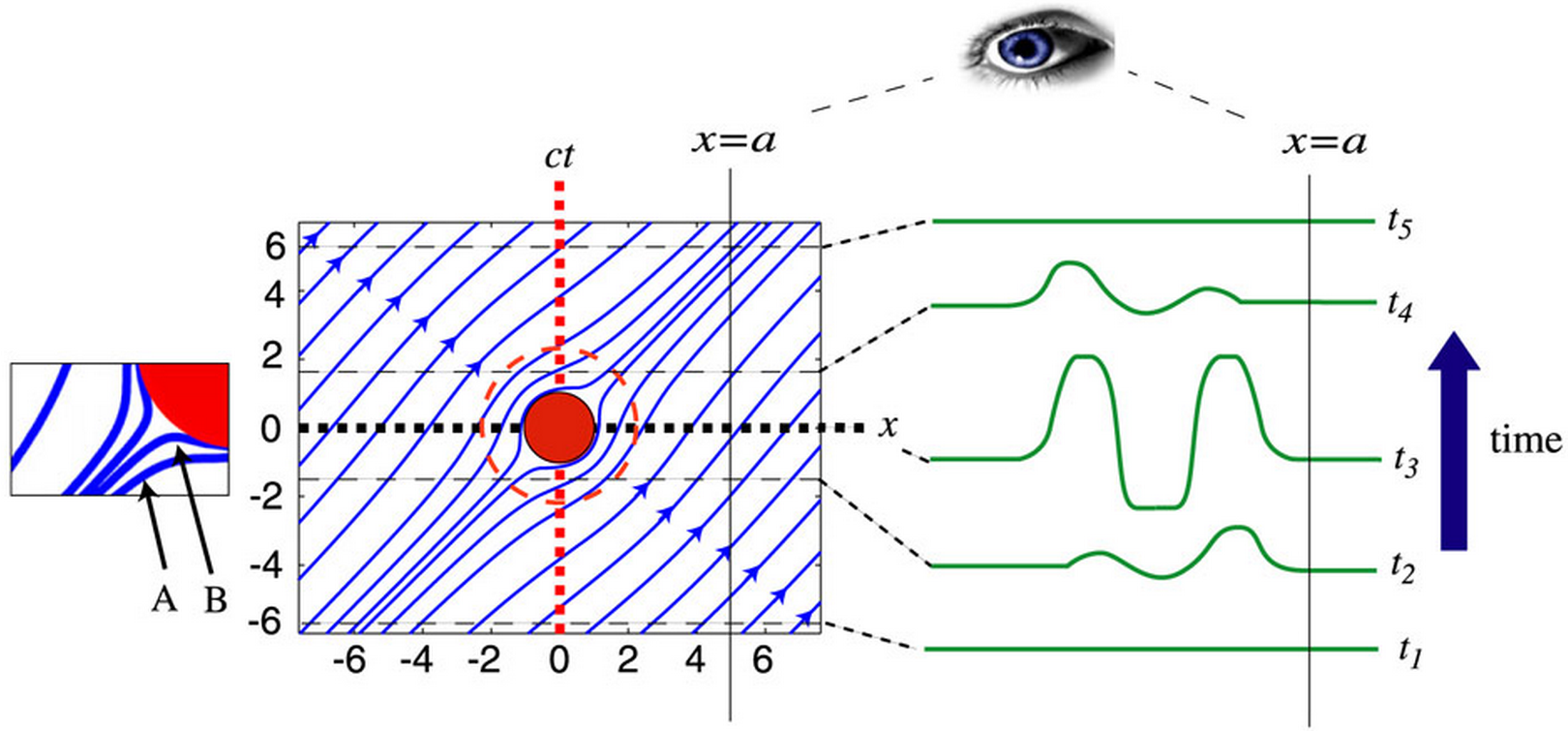First demonstration of time cloaking
July 19, 2011

Schematic of the temporal cloak using a pair of split time-lenses (Moti Fridman et al.)
Researchers at Cornell University have designed and built a cloak that hides events in time, The Physics ArXiv Blog reports.
Time cloaking is possible because of a kind of duality between space and time in electromagnetic theory. In particular, the diffraction of a beam of light in space is mathematically equivalent to the temporal propagation of light through a dispersive medium: diffraction and dispersion are symmetric in spacetime, the researchers said.
A time-lens can be made using an electro-optic modulator that can magnify or compress in time. The temporal cloak at Cornell was built by placing two time-lenses in series and then sending a beam of light through them. The first compresses the light in time, while the second decompresses it again. For a short period, there is a “hole” in time in which any event is unrecorded, the researchers said.
In effect, the space between the two lenses is a kind of spatio-temporal cloak that deletes changes that occur in short periods of time — only for 110 nanoseconds — but time gaps lasting about 100 times longer should be easily achieved, the team notes.
Science NOW offers a more detailed description: To open the gap in the beam, Fridman and his colleagues used a “time lens”—a device that can shift the frequency of the light. At a particular moment, they first shift the frequency of the light higher and then suddenly lower. They then send this “frequency modulated” light through an optical fiber designed so that some wavelengths of light are sped up and travel faster than other wavelengths. As one set of wavelengths races ahead of the other set, a gap opens in the beam.

Time hole. This schematic of a proposed time cloak shows that light can be manipulated—some wavelengths advanced, while others are slowed—so that an event occurring inside the red circle at a particular time is not illuminated and is never seen by an outside observer. (Credit: M. W. McCall et al 2011 J. Opt. 13 (March 2011))
Then, after the light has passed the spot where the hidden event will occur, the experimenters reverse the process. They run the light through a fiber in which the wavelengths that had been sped up are slowed down and those that had been slowed down are sped up, so the gap closes. They then use a second “time lens” to undo the frequency shifting.
Ref.: Moti Fridman et al., Demonstration of temporal cloaking, arXiv, 2011; [arXiv:1107.2062]